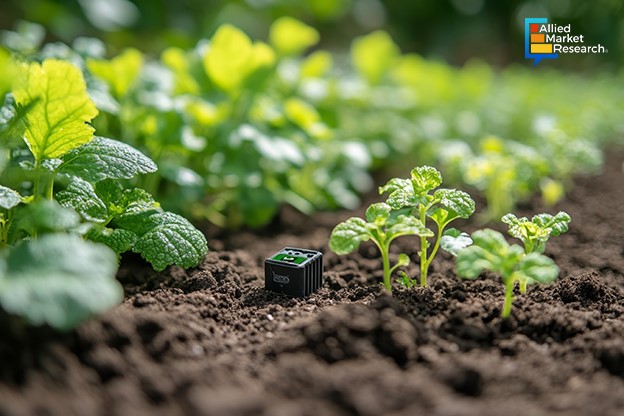How Have Nano Fertilizers Helped Farmers Increase Crop Yield and Productivity?

10 Mar
2025
Key takeaways:
- Introduction
- Role of nano fertilizers in improving crop yield
- Impact of nano fertilizers on the environment
Fertilizers and manure have been some of the most important inputs in agriculture and cultivation since ancient times. Farmers worldwide have long used natural compost to enrich soil and nourish crops. However, since the late 1800s, the population explosion across the world has led to problems of food scarcity across the globe. To address this issue, new types of synthetic fertilizers were developed that increased the crop yield exponentially. While in the short run, these artificial composts allowed countries to make food available, accessible, and affordable to all, in the past few decades, several new issues have emerged due to the overuse of conventional synthetic fertilizers.
In several developing countries like Mexico, Brazil, India, and Indonesia, the Green Revolution in the 1960s emphasized the use of synthetic fertilizers to boost soil fertility. Over the years, the overuse of such artificial compost has led to an increase in the salinity of the soil, thus leading to land degradation. In such a scenario, agriculturists have proposed the use of nano fertilizers to restore soil fertility and enhance crop productivity.
Growing use of nano fertilizers to boost farm yields helping the industry flourish
Nano fertilizers refer to advanced plant nutrients and soil additives that contain nanostructures manufactured using nanotechnology. These compounds provide essential nutrients such as nitrogen, phosphorus, and potassium to crops through fine granules. Agricultural studies have shown that nano fertilizers are much better at improving farm output as the nutrients are provided to the crops through a targeted approach.
One major problem associated with traditional fertilizers is that they leach into soil and water bodies, thus reducing their impact on soil nutrition. In sub-tropical countries like India and China, irrigation plays an important role in agricultural activities due to seasonal rainfall. The use of irrigation methods further creates challenges with respect to fertilizers getting washed away from the farms, leaving the land barren. Nano fertilizers, hence, become even more useful in regions where crop cultivation depends heavily on irrigation.
Increasing focus on sustainability boosting industry revenue
Apart from limited usefulness, another major issue with conventional fertilizers is their negative environmental impact. The synthetic fertilizer manufacturing industry is a leading contributor to greenhouse gases and carbon emissions which result in global warming. Moreover, these compounds disturb the natural habitats of various organisms, thus influencing global biodiversity negatively. For instance, environmental research has demonstrated that the mixing of artificial soil additives in freshwater bodies such as lakes and ponds is the primary reason behind algal blooms and eutrophication. The sudden growth of algae in such aquatic ecosystems drastically reduces the level of dissolved oxygen leading to the death of fish and other animals.
On the other hand, the use of nanotechnology to produce nano fertilizers is a less polluting manufacturing process. Many companies, in recent times, have shifted to these innovative techniques to reduce their carbon footprint and decarbonize their operations in the long run. Also, since nano fertilizers get absorbed by the soil easily, the chances of contamination of aquatic ecosystems are reduced drastically, thereby minimizing the impact on the environment. Owing to these unique advantages, several fertilizer businesses have started investing in R&D activities to manufacture eco-friendly and sustainable soil additives. Certain enterprises have even launched innovative products to cater to the evolving needs of their consumer base, thus increasing their footprint in the nano fertilizer industry.
In June 2024, for instance, Paradeep Phosphates Limited, an Indian fertilizer manufacturing firm, announced the launch of Jai Kisaan Navratna nano urea and DAP products. As per the survey conducted by the company, the nutrient use efficiency of these new additives is around 90% compared to 35-40% offered by conventional fertilizers. Both solutions have received certification from agricultural universities under the Indian Council of Agricultural Research. As per many industry experts, the product launch is anticipated to augment the growth rate of the industry in the near future.
Winding up, the various advantages offered by nano fertilizers have played an important role in the growth of the industry. Moreover, the transition toward environmental sustainability is expected to create new expansion opportunities in the sector. Additionally, the increasing investments in R&D and the launch of innovative products by major companies are predicted to strengthen the position of the market in the coming period.
Contact our experts for the latest developments and upcoming trends in the nano fertilizer industry!

Akhilesh Prabhugaonkar
Author's Bio- Akhilesh Prabhugaonkar holds a bachelor’s degree in Electronics Engineering from the reputed Vishwakarma Institute of Technology. He has a special interest in the fields of forensics, world history, international relations and foreign policy, sports, agriculture, astronomy, security, and oceanography. An ardent bibliophile and melophile, Akhilesh loves to write on topics of his interest and various other societal issues. This love for writing made him enter the professional world of content writing and pursue his career in this direction.
Avenue: Entire Library membership of Allied Market Research Reports at your disposal
- Avenue is an innovative subscription-based online report database.
- Avail an online access to the entire library of syndicated reports on more than 2,000 niche industries and company profiles on more than 12,000 firms across 11 domains.
- A cost-effective model tailored for entrepreneurs, investors, and students & researchers at universities.
- Request customizations, suggest new reports, and avail analyst support as per your requirements.
- Get an access to the library of reports at any time from any device and anywhere.
Related Post
-
How are Submarine Cables Transforming Global Connectivity with Enhanced User Experience?
-
Endoscopy Procedures: Transformations in Techniques and Applications
-
AI-Powered Video Analytics: How the Product Actually Works for enterprises
-
Painting Robots: Transforming Precision Coating and Creative Applications
-
Innovations in Pharmacovigilance Systems Advancing Patient Safety
-
Understanding Edge Security: Keeping Data Safe Near the Source
-
Exploring the Use and Advancements of 3D Laser Scanners in Professional Applications
-
Reinforcing Industrial Controls with Smarter Tools and Training








